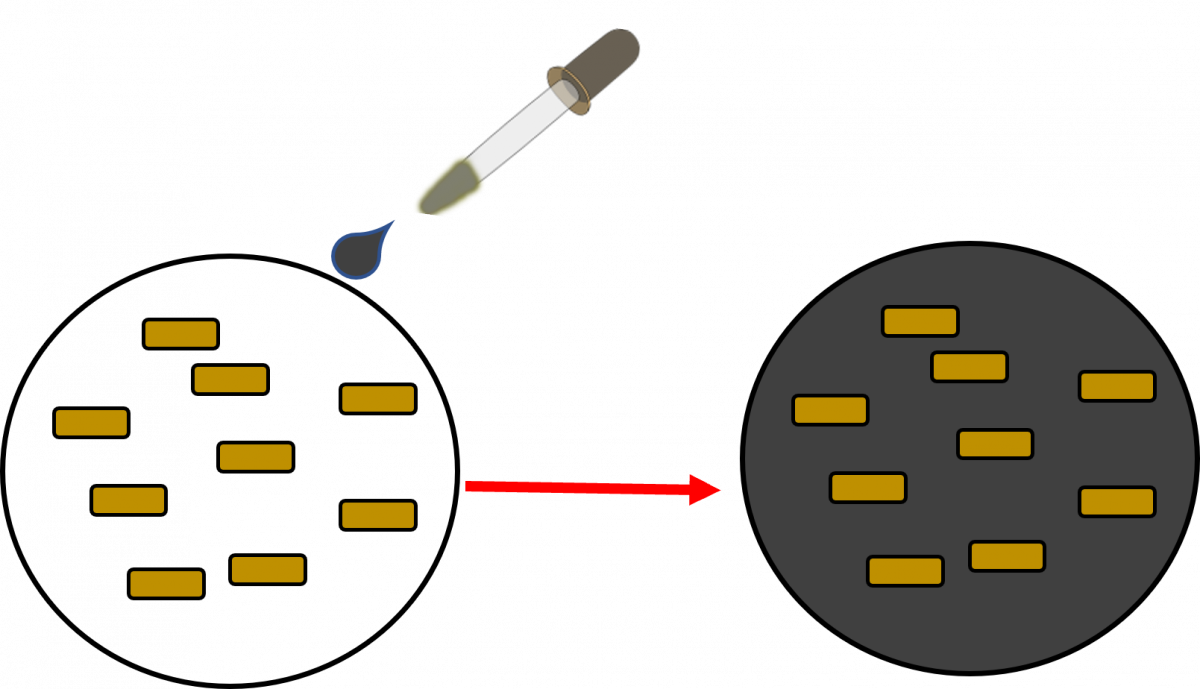Content Status
Type
Linked Node
Fluorescence Microscopy
Learning ObjectivesFluorescence Microscopy Using LED Microscope
H5Content
Content

Fluorescence Microscopy is a newer and better type of microscopy where the TB bacteria are stained using a fluorescent dye using the property of Acid Fastness. The dye will fluoresce when illuminated by UV light. When the UV light source is an LED Lamp, it is called LED fluorescent microscopy.
Here the bacilli appear as slender bright yellow fluorescent rods, standing out clearly against a dark background, as can be seen in the figure below.
Figure: AFB as seen under an LED Fluorescence Microscope:
Principle of Fluorescence Microscopy
- Cell walls of Acid-fast Bacilli (AFB) is made up of Mycolic Acid. The mycolic acid creates a waxy layer, making the cell wall impermeable to acids and alkalis.

- The primary stain, a fluorescent dye called Auramine-O, binds to the cell wall of the bacilli.

- Intense decolorization by acid alcohol does not release the primary stain. Thus, the AFB retain the colour of the primary stain, while other bacteria lose the stain

- The counterstain, Potassium Permanganate provides a contrasting background and is useful to quench background fluorescence.

Advantages of LED-FM:
- Fluorescence LED microscopy is more sensitive (10%) than conventional ZN microscopy.
- It may be placed in existing DMCs and does not require any additional infrastructure.
- Examination of fluorochrome-stained smears takes less time.
Video file
Resources
LMS Page Link
Content Creator
Reviewer
Target Audience
- Log in to post comments
Comments
Illustrations used is process of staining
ManuMathew Tue, 07/06/2022 - 21:20
The figures appear to illustrate the process of staining. It may be moved to a different page.